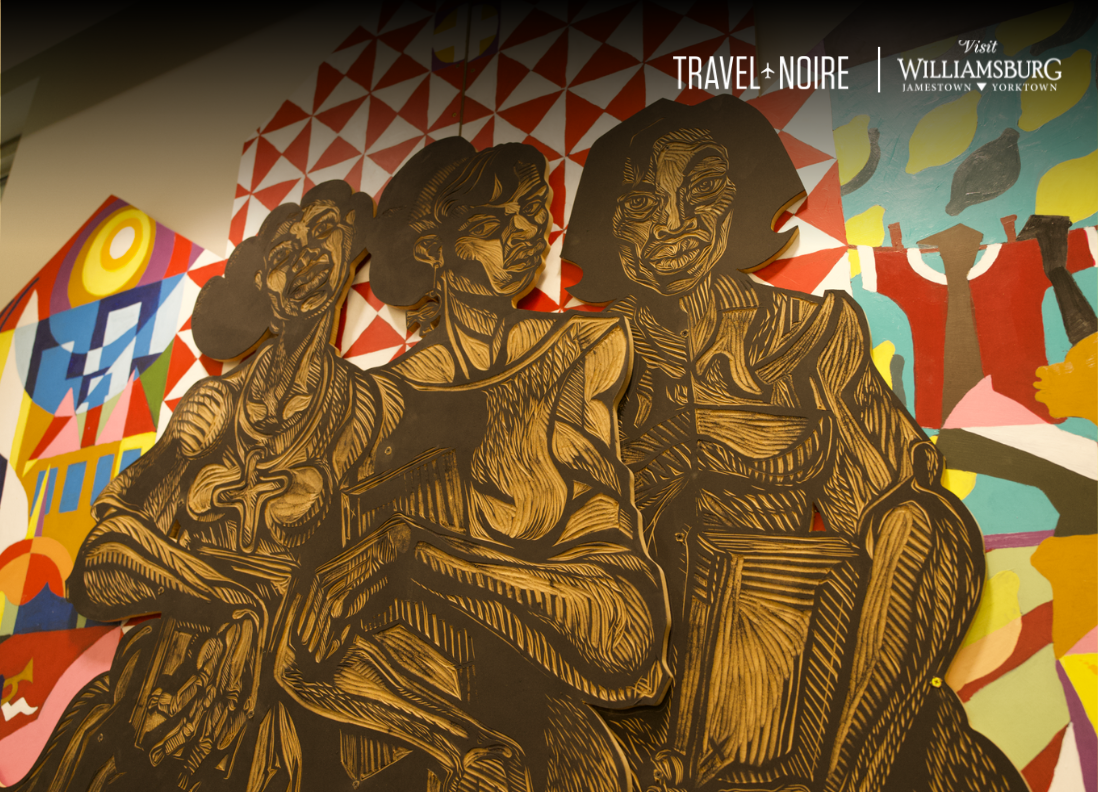When Carter G. Woodson founded Negro History Week in 1921, he set out to honor the incredible contributions of Black people across the diaspora and their contributions to an ever-evolving society. It’s an effort that continues today as individuals, organizations, and institutions work to preserve and celebrate this rich heritage.
While Williamsburg, VA, may not immediately come to mind when considering the vast influence of Black Americans, Travel Noire went on an adventure to speak with several Black Historians and community members who resonate with Harriott and are making sure the stories of Black people in Williamsburg are honored and amplified.
So grab your crew, pack your bags, and check out these places in Williamsburg for a little 24/7 Black History action.
Churches are a part of the bedrock of Black American History, and First Baptist Church is no different. The highly recommended tour tells the story of former enslaved and freed worshippers founding the congregation in 1776 and why the institution was necessary as a safe place.
“In 1776, when First Baptist Church started, it created a whole new dynamic for this community,” explained historian Liz Montgomery. The first Black, by Blacks, for Blacks church was established.
Although the original building no longer stands, Colonial Williamsburg has embarked upon an archeological journey, uncovering parts of the church’s original foundation and other assets to expand on what we know about some of the congregation’s original members.
Request a tour to discover a piece of functioning history. Visit the multi-level exhibits and ring the Freedom Bell—just like former President Barack Obama did for the opening of the National Museum For African American History & Culture in D.C.
Considering the times, being transported back to the 18th century is likely not on your travel bucket list. However, Colonial Williamsburg offers a unique look into the insights into the beauty of the city’s architecture. With educational programs in place, community leaders Janice Canaday, Manager of African American Community Engagement for Colonial Williamsburg, and Andre Taylor, Historian of African American History and Culture with the Colonial Williamsburg Foundation, are making sure that the whole truth is uncovered, and Black contributors have their space in the narratives.
“Folks have a one-sided view,” Canaday said. “So it’s easy to think about the George Washingtons and the Thomas Jeffersons, but there are those people in the shadows who never get talked about who are the founding fathers and mothers of this nation in a much greater way than those that we illuminate. Even in resistance, there’s brilliance.”
College of William & Mary Art Installations
There is no culture without Black culture; the arts are a shining example of this truth. The campus of William & Mary boasts a physical structure acknowledging the institution’s slaveholding past – Hearth: Memorial to the Enslaved. The monument’s dedication page calls out the tension of recognizing the beauty in the world juxtaposed with the past of those responsible for it. “For almost 170 years, the economy of the institution, like the economy of the country, was dependent upon the labor of enslaved people. This story must be brought out of the shadows and into public view,” the moniker reads.
Steve Prince, artist and Director of Engagement at the Muscarelle Museum of Art, recognizes the need for this social reckoning. He is one of the people creating beautiful visual representations designed to inspire people to search for more truths.
“Connected to this site is a sculpture called Sankofa Seed that I created in honor of the first three African-American resident students at William & Mary in 1967,” Prince said. “The three women stayed in Jefferson Hall. The Sankofa sculpture is a mythical bird from Ghana that encourages one to remember the past while moving forward. Those who forget the past are doomed to repeat it.”
Visiting spaces like these are awe-inspiring but, truthfully, can be a lot to take in. So, grab a bite to eat at one of Williamsburg’s Black-owned restaurants, like Southern Pancake and Waffle House or Corey’s Chicken Shack, to debrief about all you saw and experienced.
History won’t always be pretty, but it is necessary to embrace it. The world can’t go forward unless it can fully embrace where it has been, and so much of that history is not found in textbooks. Tapping into the lesser-known stories of ancestors and diving into the lived experiences of those making a difference is a part of Williamsburg’s commitment to preserving and honoring Black History. Visiting the city’s museums and historic sites gives us an intimate, first-hand witnessing of the early stories and experiences that shaped our history.
Learn more about these sites and start planning your trip at www.visitwilliamsburg.com.





